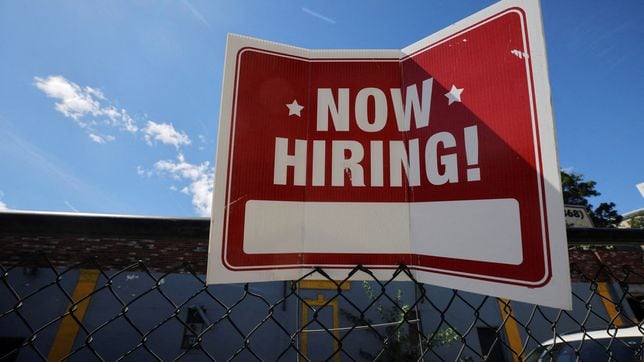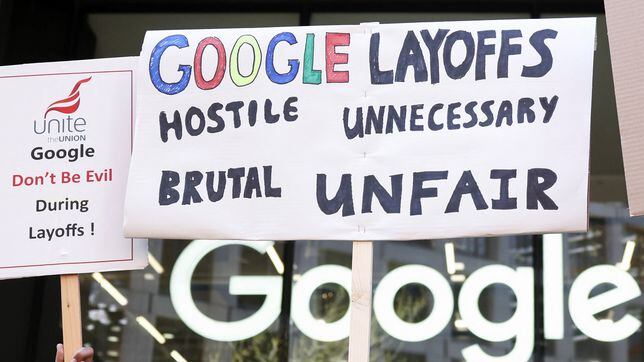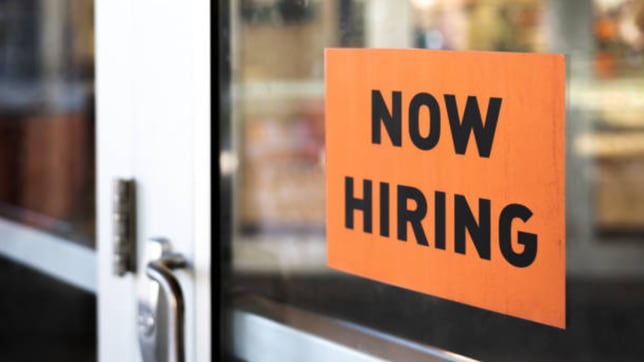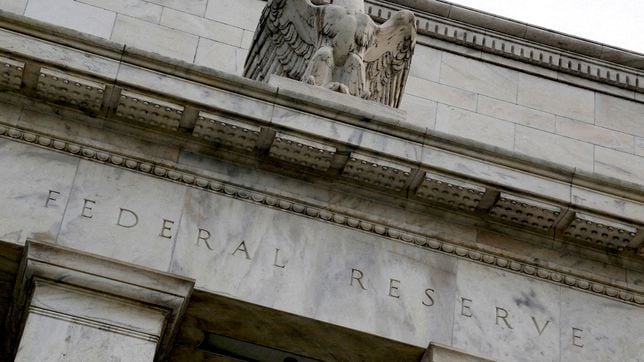Economy new summary | 5 May 2023
Unemployment fell to 3.4% in April. Next week the BLS will release the CPI report, both of which will be used by the Fed to evaluate further rate hikes. Follow along for the latest.
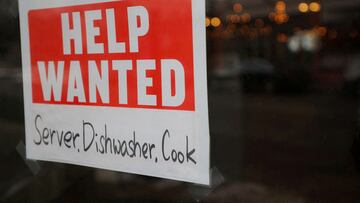

Show key events only
April Unemployment Report: Latest Updates
Headlines: Friday, 5 May 2023
- US economy added 253,000 jobs in April; the unemployment rate fell slightly to 3.4 percent
- The unemployment rate for Black workers hits a historic low.
- Positive news from the labor market came as the Fed increased rates by 0.25 percent, leading them to climb above five percent for the first time in over a decade.
- Around 1.8 million workers are currently receiving unemployment benefits.
Read more from AS USA:
An unclaimed tax refund from 2019? There's still time to claim it!
If you’re one of the nearly 1.5 million people with an unclaimed tax refund from 2019, you still have some time to get your hands on it, with the final deadline to file your return being July 17, according to the IRS.
Those refunds are worth almost $1.5 billion in total, with an average payout of $893.
There’s usually a three-year deadline to claim refunds for unfiled returns before the money becomes the property of the Treasury Department. However, 2019 taxpayers are given extra time because of the covid-19 pandemic.
Inflation is falling as job market stays hot
Inflation has been sliding since the middle of last year with the consumer price index falling from 9.1% annually last June to 5% in March.
That’s still above the Federal Reserve’s target rate of 2%, but prices have been falling without an accompanying rise in unemployment.
Wages are also slightly higher than are consistent with 2% inflation, according to Friday’s employment report.
Many economists agree inflation is largely being driven now by companies keeping prices higher simply because they can.
Economic adviser sees continued strength in job market
US Council of Economic Advisers Member Heather Boushey says there is continued strength in the job market, proven by the low 3.4% unemployment rate. She says the Biden administration is continuing to add jobs at a more sustainable rate.
Boushey points out that the participation in the labor force of women in their prime working age is at an all-time high.
She also emphasizes that inflation is slowing down, though she admits that prices are still high.
FDIC considers loss-share deals to boost bids on failed banks
The Federal Deposit Insurance Corp is mulling whether to offer loss-sharing agreements to private equity firms and other non-banks that buy parts of failed lenders, after it was left holding a large portfolio of Signature Bank loans following its collapse, Bloomberg News reported.
Since the FDIC does not regulate non-banks, the firms cannot bid for an entire lender but such a move could entice them to buy loans and assets at a discount from collapsed institutions and help the FDIC get higher bids, the report said.
Earlier this week, JPMorgan entered into a loss-sharing agreement with the FDIC when it agreed to assume all of First Republic's deposits but share losses on certain portfolios including residential and commercial loans.
Last month, the FDIC retained asset manager BlackRock's financial markets advisory unit to sell two portfolios with face values of nearly $27 billion and $8 billion after the collapse of Signature Bank and Silicon Valley Bank.
(REUTERS)
IRS in-person support available
Sorting out your taxes can be, well, taxing, Fortunately the iRS are offering in-person sessions across the country so if you need help, check out where your closest center is and get on down.
Biden responds to job creation
President Biden spoke late last night about how, back in the 1930s, a law was passed allowing the president to insist that federal projects use American products and workers and how no one paid much attention to it until the current administration did.
He said he's now "investing in America and creating good-paying American jobs while doing it."
How the U.S. economy is losing momentum
John Kemp, a Reuters market analyst, has been assessing how, despite not exactly being in recession, the U.S. economy needs a careful eye...
Like U.S. Supreme Court Justice Potter Stewart’s famously flexible definition of obscenity (“I know it when I see it”) recessions have proved notoriously difficult to define with precision.
Observers often disagree at the time whether the economy is already in recession, and sometimes afterwards whether a recession has occurred or just a “soft patch” in an otherwise uninterrupted business cycle expansion.
In most countries, recessions are informally defined as two consecutive quarters of negative growth in real gross domestic product, though using GDP data this way has drawbacks because it can be subject to substantial revisions.
In the United States, the National Bureau of Economic Research (NBER) defines a recession more flexibly as “a significant decline in economic activity that is spread across the economy and lasts more than a few months.”
The definition emphasises three characteristics – depth, diffusion and duration – to distinguish between recessions and milder slowdowns in the whole economy or cyclical downturns confined to one or a few sectors.
In practice, NBER’s Business Cycle Dating Committee, which has become the accepted arbiter of recessions, employs a variety of indicators to determine when a recession has occurred.
“Because a recession must influence the economy broadly and not be confined to one sector, the committee emphasizes economy-wide measures of economic activity,” NBER explains on its website.
These measures include personal income less transfer payments (PILT), nonfarm payroll employment, household employment, real personal consumption expenditures and industrial production, among others.
Even with this suite of indicators, NBER often makes a determination the economy has experienced a recession months after it started, and some downturns come close to being a recession without one being declared.
ON THE THRESHOLD
Based on recent data, the U.S. economy is currently paused on the threshold between a significant mid-cycle soft patch and a formal cycle-ending recession.
The industrial side of the economy, which includes the manufacturing and freight transportation sectors, is already in a significant and prolonged downturn that likely meets the threshold for a recession.
Monthly business surveys show manufacturing has been contracting since November 2022, and the downturn is confirmed by falls in container freight, diesel consumption and industrial electricity sales.
But the same surveys show the much larger service sector still reporting marginal growth, keeping the economy as a whole out of recession so far.
Chartbook: U.S. economic indicators
The Institute for Supply Management's (ISM) service sector index stood at 51.9 in April (with more businesses reporting expanding activity than contraction) compared with a manufacturing sector index of just 47.1.
The contrast between the sectors is smaller than it appears: the services index is generally higher than its manufacturing counterpart throughout the economic cycle, but both move in broadly the same direction.
In April, the ISM services index was in only the 15th percentile for all months since 1997 compared with the manufacturing index in only the 9th percentile.
If the manufacturing sector has already fallen into recession, the services sector is only just avoiding it at the moment.
INCOME AND EMPLOYMENT
So far, growth in consumer spending has helped offset a sharp deceleration in business investment and efforts to reduce excess inventories by pausing or reducing new orders.
Households have been able to keep spending as a result of income gains from rising employment, cost-of-living adjustments to wages and salaries, and tax cuts.
Real personal incomes less transfer payments increased by 1.7% in the first three months of 2023 compared with the same period a year earlier, a significant acceleration from 0.3% in the second quarter of 2022.
Real PILT gains coupled with the rotation of spending from merchandise back to services following the end of the pandemic and mobility restrictions has given a boost to parts of the services sector despite inflation.
Reduced prices for gasoline have eased some of the pressure on household budgets, and employment in both manufacturing and the services sector is still increasing, supporting incomes, though the rate of growth is slowing.
At the same time, interest rates are still increasing and credit conditions are set to tighten for households and firms following the regional banking crisis.
RECESSIONS AS NARRATIVES
More informally but fundamentally, economist Robert Shiller has likened recessions to “narratives” that spread similar to an epidemic through the economy (“Narrative economics”, Shiller, 2017).
“A recession is a time when many people have decided to spend less, to make do for now with that old furniture instead of buying new, or to postpone starting a new business, to postpone hiring new help in an existing business.”
Some of the narratives associated with recessions have become more common in the last nine months, likely presaging a further slowdown in the business cycle.
Many prominent corporations have switched to focusing on efficiency, cost control and margins rather than growth. Investment is slowing and layoffs are becoming more common in at least some sectors of the economy.
The one strong area of the economy is the increase in nonfarm employment. But even here the gains are slowing and there are signs the labour market is starting to cool.
The number of people claiming unemployment benefits for the first time each week has begun to edge up from a multi-decade low in the third quarter of 2022.
While a more cautious approach to spending for an individual household or firm is rational, in aggregate it is recessionary.
In recent decades, recessions and mid-cycle soft patches have normally prompted the central bank to cut interest rates to spur more spending.
But with unemployment at multi-decade lows, employment costs rising, and limited spare capacity in the economy, central bank policymakers are likely to prioritise inflation control over supporting growth.
Unemployment: a complicated matter
Maybe you can help out Justin who is looking at how the unemployment rate has fluctuated over the years.
"Remote job shift" is another that one contributor offered up, while the "steady exit of baby boomers from the ranks of the employed" was also assessed.
Wages have increased four percent since April 2022
In nominal terms, weekly earnings have increased four percent over the last year. However, accounting for the year-over-year inflation rate in March, this would equate to a decrease in real wages of two percent.
However, next week when the BLS releases the Consumer Price Index report, we will know if workers are continuing to see their purchasing power fall. In order to avoid a decrease in real wages, the year-over-year inflation rate would need to drop by at least two percent from that which was seen in March.
All private industries saw nominal increases in their wages, and next week we will be in a better position to see how changes in real wages have impacted the various industries tracked by the BLS.
US Labor force has increased 1.6 percent over the last year
Compared to April 2022, the US labor force is now 1.6 percent larger, growing from 163.9 million to 166.6 million. This boost of new and reentering workers has led to an increase in the labor force participation rate of 0.04 percent.
Top Line: What you need to know about the April Employment Report
Unemployment fell to 3.4 percent for workers over 16 in April.
After two months of declining job numbers, April turned that trend around, with 253,000 jobs being added to the economy.
Gender: The unemployment rate for women over twenty (3.1) remained lower than that seen for men (3.3). Compared to the rates recorded one year ago, the figures have fallen by 0.01 and 0.02 percent, respectively.
Race/Ethnicity: Across racial and ethnic groups, there is a wider variation that exists between men and women:
- Asian: 2.8 percent
- Black: 4.7 percent
- Latino/Hispanic: 4.6 percent.
- White: 3.1 percent.
Since April 2022, Black workers have seen the most dramatic declines in unemployment --over two percent. Meanwhile, all those have remained unchanged or increased slightly.
Job numbers exceed expectations... once again!
Again, the number of jobs added to the US economy far exceeds expectations. Trading Economics had projected an increase in unemployment, but after adding more than 250,000 jobs, the unemployment rate fell to 3.4 percent.
Job openings have fallen rapidly in 2023
Since December 2022, the number of job openings in the United States has fallen by 11.2 million to 9.5 million in March.
There are still more jobs than people without one, giving workers more power than they typically hold in the labor market.
However, as interest rates have been increased by the Federal Reserve, firms have slowed hiring and increased layoffs. These shifts will weaken the demand for labor and place workers in a weaker position.
Additionally, as demand for labor falls, wages will likely follow. When demand for any commodity is high, sellers are abe to offer a higher price. The same is true for many workers, who now face a softening labor market and could see their purchasing power as inflation remains elevated.
Unemployment projected to rise
The financial trading hub, Trading Economics, projects that the April unemployment rate will rise 0.1 percent to 3.5 percent, compared to the figures recorded in March.
Job growth is expected to remain positive (i.e., more jobs will have been added to the economy than lost), but the rate of growth in the labor market is expected to continuing slowing.
In January, over half a million jobs were added, far outpacing expectations. Then in February, the number of new jobs fell to just over 300,000.
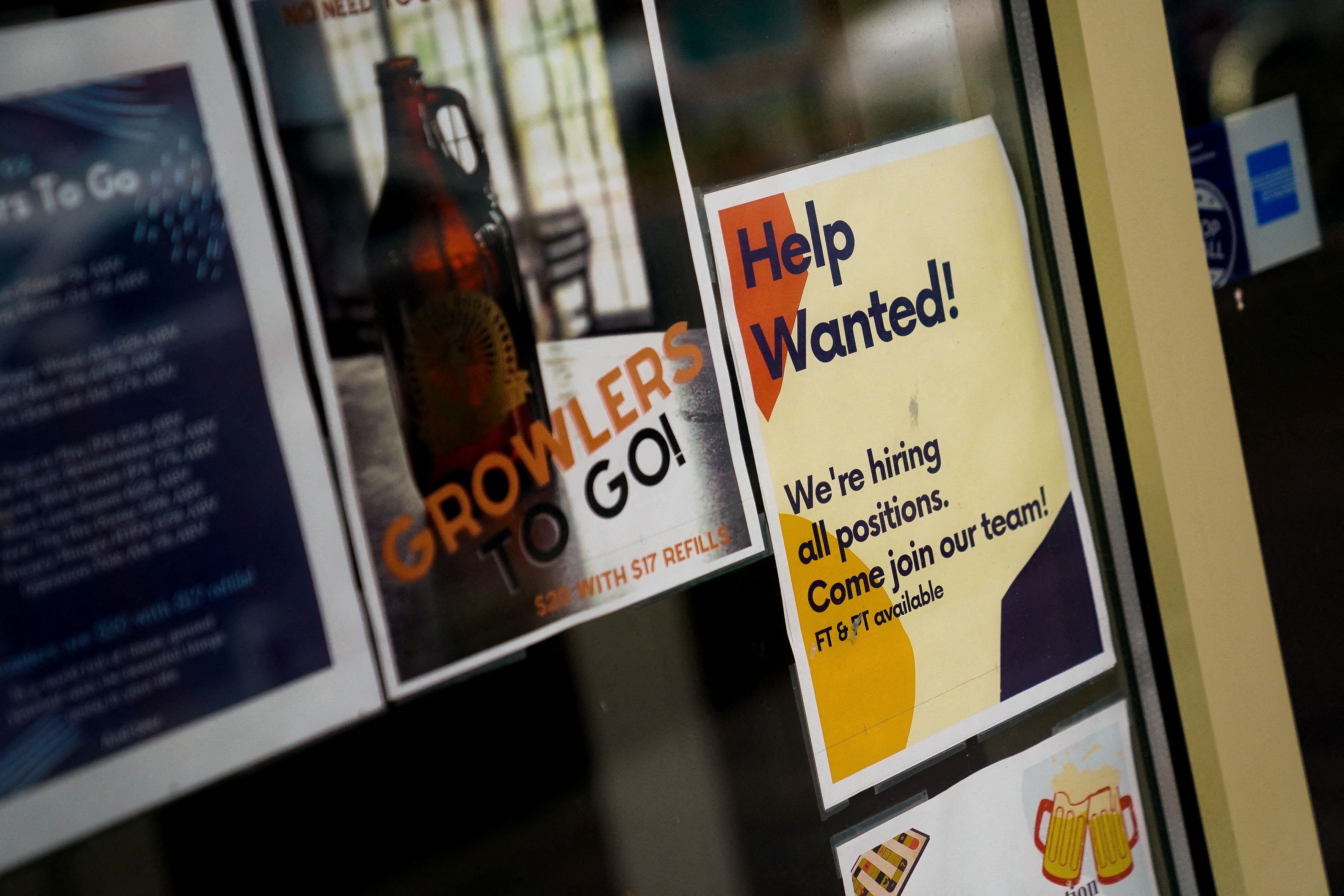
The April Employment Report will be released later this morning. Let’s take a look at what we may see and what it means for the economy. / ELIZABETH FRANTZ / REUTERS
Which industries have seen the greatest increase in unemployment?
While the national unemployment rate moved down from 3.8 percent in March 2022 to 3.5 percent a year later, however, not all industries have seen a fall in the number of workers without a job. For example, in the mining industry, unemployment has risen from 2.6 percent to 6.5 percent --a 150 percent increase-- over the same period.
Other sectors that have seen an increase in unemployment, include:
- Manufacturing (Nondurable goods): 2.5 percent to 3.6 percent representing an increase of 44.00 percent
- Information: 2.3 percent to 3.1 percent representing an increase of 34.78 percent
- Government workers: 1.5 percent 1.7 percent representing an increase of 13.33 percent.
Unemployment differs by educational attainment
While the national unemployment rate stands at 3.5 percent, the figure differs by educational attainment.
- No high school diploma: 4.8 percent (-0.05 percent over the last year);
- High school diploma/GED: 4 percent (no change over the last year);
- Associates/Some college: 3 percent (-0.01 percent over the last year); and
- Bachelors/Advanced degree: 2 percent (no change over the last year).
Every month the Bureau of Labor Statistics (BLS) publishes a report on the United States jobs market to track trends in employment across the country. The employment data for April 2023 will be released today at 8:30 am ET. We’ll have the report’s findings right here as soon as they are released.
Read our full coverage for details on the current state of unemployment and how the Fed's actions could soften the labor market.
Last year, economists, business leaders, and some politicians pointed to “The Great Resignation” as a reason to worry about the tightness of the labor market. With unemployment hitting a historic low and the demand for labor remaining high, some workers opted to quit their job to find a new one that offered better pay or conditions. The rate of voluntary separations, or quits, has started to fall, and now layoffs (or involuntary separations) are on the rise.
Read our full coverage for all the details.
A study published by researchers at Circuit, a company focused on last-minute deliveries, found a growing dissatisfaction among delivery workers in the United States.
The workers surveyed hailed from different parts of the country and were employed by various companies. Of the nearly 1,000 workers surveyed, 80 percent said that they felt they were underpaid, with employees from Grubhub (92 percent), DHL (91 percent), and Post Mates (88 percent) reporting these sentiments at the highest levels. Around 15 percent of workers reported that they had already taken on a second job, and 77 percent of those surveyed said they were planning to take another on.
Read our full coverage for what these conditions could mean for UPS workers who may strike as early as July if their union and UPS are unable to reach an agreement.
What time with the BLS' April Employment Report be released?
The report will be released at 8:30 AM ET.
Next week, the BLS will release the Consumer Price Index report and the latest data on real wages. These three reports provide critical information to economists and policy makers as they evaluate their approaches to monetary and fiscal policy.
Which states are seeing the largest nominal increases in initial unemployment claims?
Initial unemployment claims are trending upward and have risen by around twelve percent over the last year. However, some states have seen much larger gains in the number of workers claiming benefits, while others have seen the figure decrease.
For the week ending on 22 April, Massachusetts (+8,774), Illinois (+2,482), New York (+1,487), Michigan (+625), and Colorado (+604) saw the largest boosts in claims. On the other hand, claims fell by the greatest magnitude in California (-3,754), Ohio (-3,236), New Jersey (-2,962), Connecticut (-2,076), and Rhode Island (-1,426).
Total claims have increased 21 percent compared to the rate recorded in mid-April 2022. The highest unemployed insurance rates were seen in California (2.4), New Jersey (2.4), Rhode Island (2.1), Massachusetts (2.0), Minnesota (1.8), New York (1.8), Alaska (1.7), Illinois (1.6), Oregon (1.6), Puerto Rico (1.6), and Washington (1.6) the week ending on 15 April.
Hello and welcome to AS USA's live blog covering the release of the April Employment Report. The BLS will release the report at 8:30 AM ET. We will be bringing you all the analysis you need to understand what the data means for the economy.
At 3.5 percent, unemployment is at a historic low. With the Federal Reserve moving quickly to increase interest rates over the last year, unemployment has not moved from its position. What has changed is the number of workers being laid off, which has jumped twenty-nine percent over the last year. Additionally, the rate of workers quitting their jobs has fallen by thirteen percent, showing that workers have less ability to move to higher pay jobs elsewhere in the economy.



/cloudfront-eu-central-1.images.arcpublishing.com/diarioas/NVLJ2534HVCAQLVQ2BYYPLGQYA.jpg)
